I made a post a couple weeks back about the yearly ATP certification events and how that is a part of our aviation pilot career pipeline metrics, but with some additional data from the 2024 U.S. Civil Airman data, I thought I would go a little futher into some of the data.
As we see from the next chart, we again see a robust production of ATP pilot certificates in 2024, although a drop in numbers from 2023, and in fact, lower than the 2022 production just slightly.

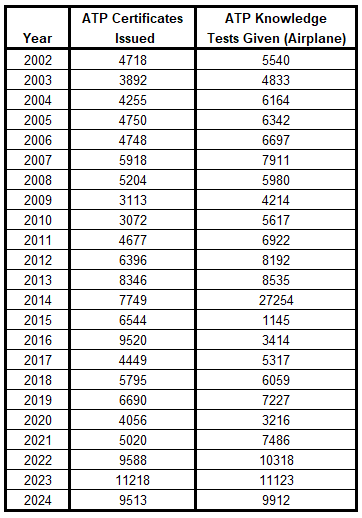
This is a good sign that we are still making significant numbers of ATP certificate holders.
But it is an interesting point that we did dip in our production in 2024 compared with the past year.
We can also see some hints at what might be coming when we also include consideration of taking the ATP knowledge tests, a precursor to the future ATP practical test (frequently combined with an aircraft type rating).
We see this number drop in the knowledge test numbers just over 10% from the previous year.
Let’s go on to another point, how many total ATP certificates are held.
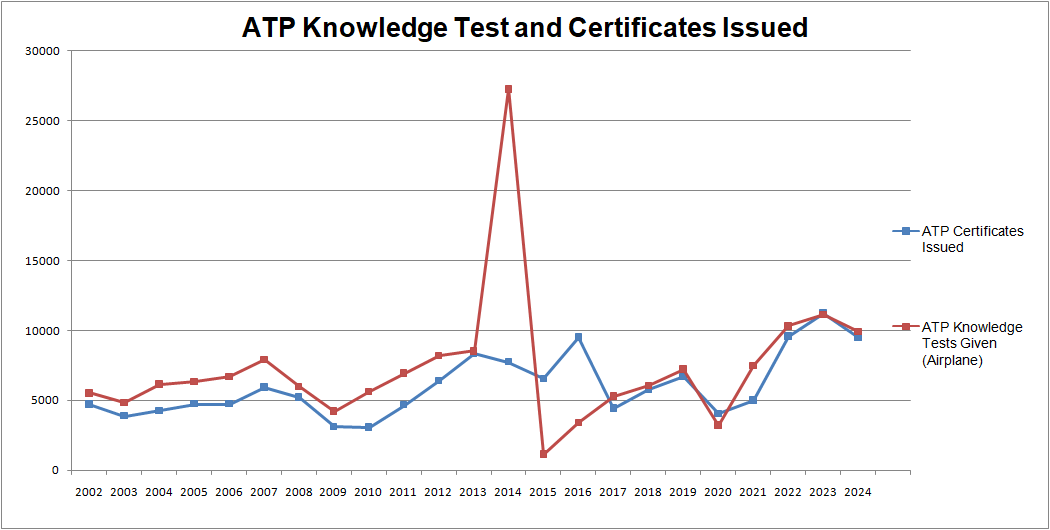
Total Number ATP Certificate Holders
When we look at the trend of total holders of ATP certificates, we see that the number on a gross consideration has continued to climb through the years.
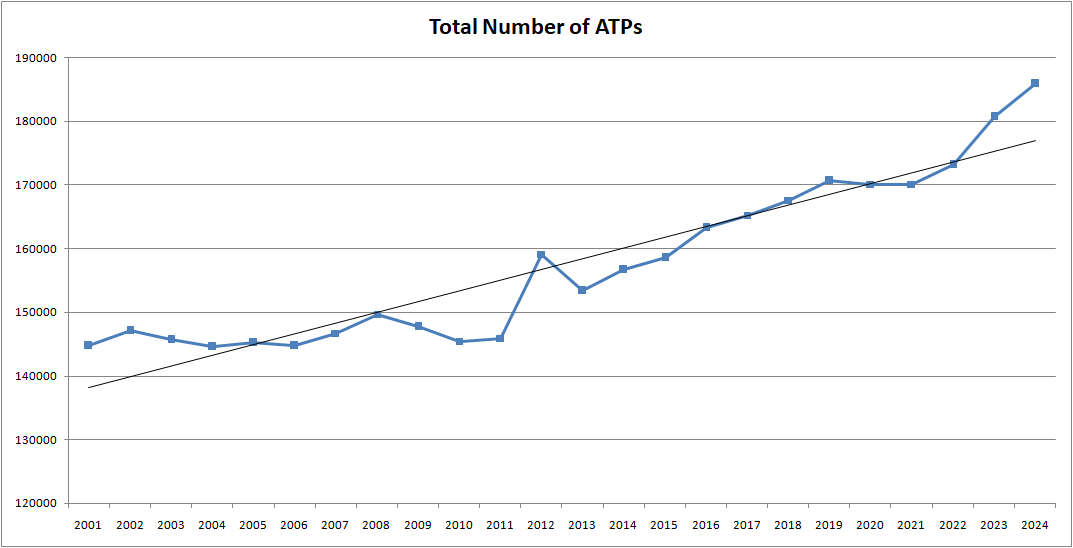
That is just part of the story though, because not everyone who hold ATP certificates does or are even able to fly professionally utilizing those privileges.
With the continued application of mandatory retirement age of 65 for airline service, many ATP certificate holders find themselves over this age.
When we look at the demographic age breakdowns of the ATP population, we can see that the percentage of ATPs who are between the ages of 50-65 (the black line) is a growing number, rising from 2001 from about 32% of the population to nearly 45% of the ATP population. These all represent ATPs that will need to retire from airline service within the next 15 years. Those positions will need to be filled with new ATP certificate holders.
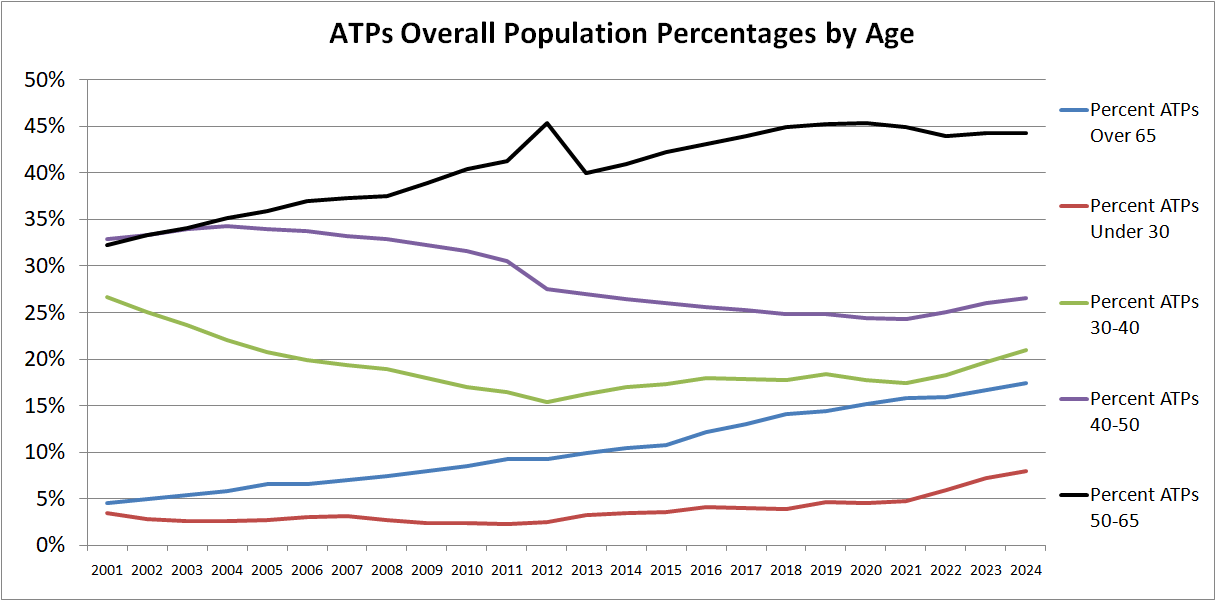
Looking at the percentage of ATPs who are under the age of 30 (the red line), we see this number increasing also. This is representative of the influx of new, young, ATP certificate holders at a high rate over the past few years.
Our ATP population has a percentage of ATPs that are over the age of 65 (the blue line) that continues to grow. It has grown from 5% in 2001 to over 15% now. These pilots can’t live forever, and certainly cannot fly as ATP pilots in airline operations at this point. As they age and pass away, they are going to drop out of our system and have the mix of age change significantly within the next 10-15 years based on statistical aging and death considerations.
Bringing this all together, the overall age of ATP certificate holders is trending downward. This is due to the influx of younger pilots becoming ATP certified and becoming a larger part of the portion of ATP pilots in our system. I believe that this is going to become a continued trend as our ATP population has older members of our population pass along and the larger bulk of the younger ATP certificate holders become a bigger portion of the mix.
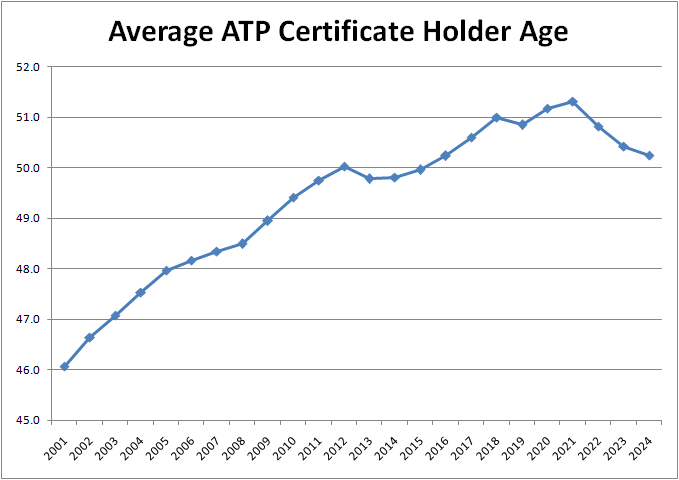
Our ATP certification data continues to show robust training and certification activity and some very interesting age demographic data that may give us some hints at the mix of our ATP population in the near future. It is also a strong indicator that there will be continued heavy retirement and a need for new ATP pilot production for professional pilot service for the foreseeable future.
